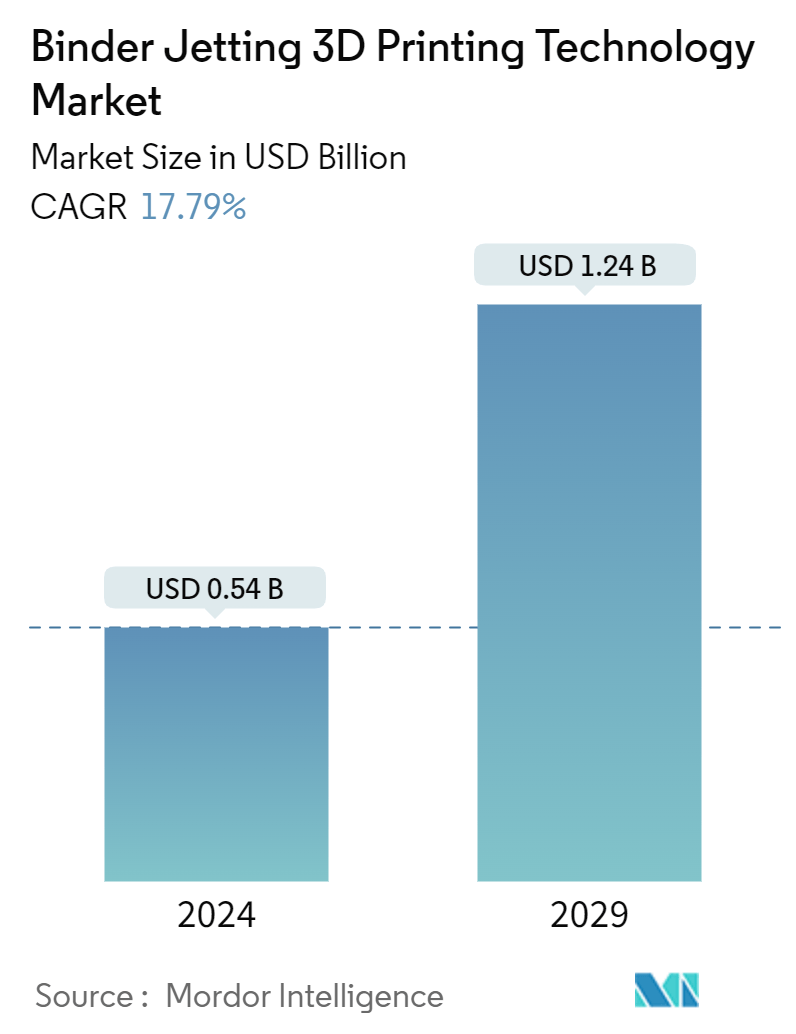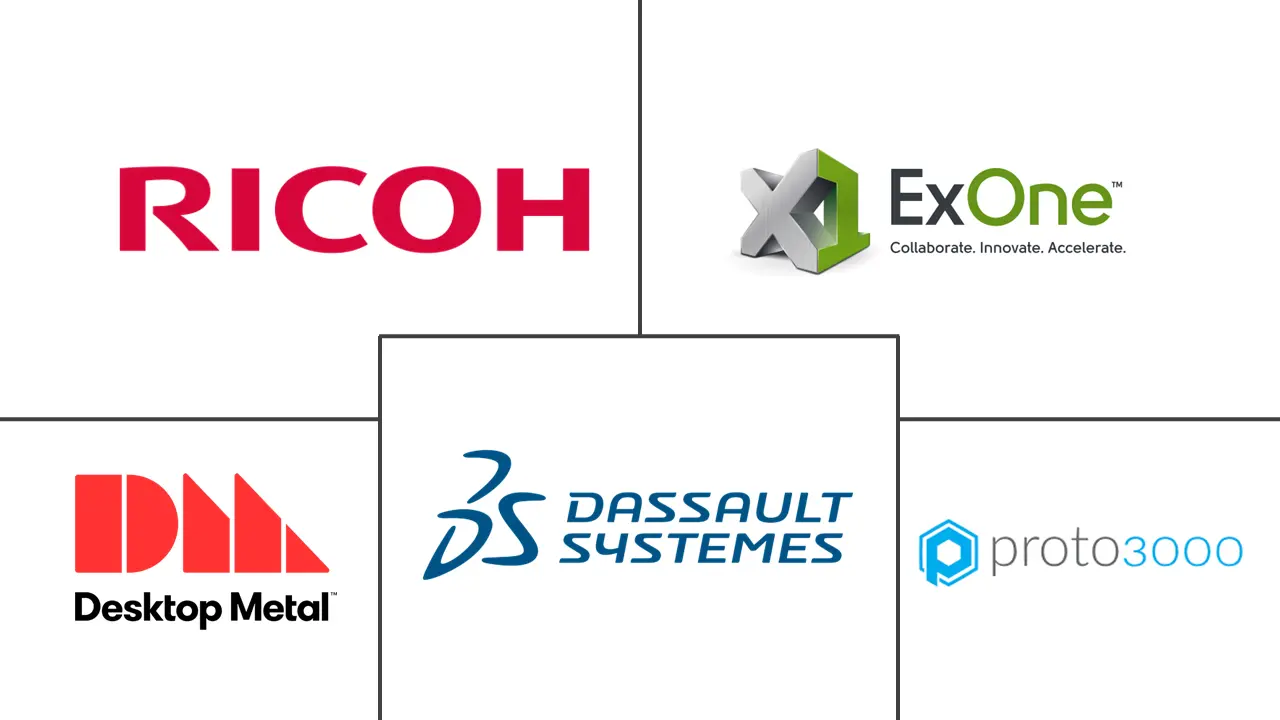Market Size of Binder Jetting 3D Printing Technology Industry

| Study Period | 2019 - 2029 |
| Market Size (2024) | USD 0.54 Billion |
| Market Size (2029) | USD 1.24 Billion |
| CAGR (2024 - 2029) | 17.79 % |
| Fastest Growing Market | Asia Pacific |
| Largest Market | North America |
Major Players
*Disclaimer: Major Players sorted in no particular order |
Binder Jetting 3D Printing Technology Market Analysis
The Binder Jetting 3D Printing Technology Market size is estimated at USD 0.54 billion in 2024, and is expected to reach USD 1.24 billion by 2029, growing at a CAGR of 17.79% during the forecast period (2024-2029).
As the manufacturing sector expands, the significance of binder jetting 3D printing technology is on the rise. A primary advantage of binder jetting over other 3D printing methods is its operation at room temperature. Consequently, issues like thermal-induced dimensional distortions—common methods, such as FDM, SLS, DMSL/SLM (like warping), or SLA/DLP (like curling)—are absent in binder jetting.
- Consequently, binder jetting machines boast some of the largest build volumes in the 3D printing realm. These expansive machines predominantly produce sand-casting molds. Furthermore, metal binder jetting systems, with build volumes reaching up to 800 x 500 x 400 mm, surpass DMSL/SLM systems in size, enabling simultaneous parallel manufacturing of multiple parts. However, the maximum recommended part length is capped at 50 mm due to post-processing steps.
- Since parts aren't tethered to the build platform in binder jetting, the entire build volume is available for use. This characteristic makes binder jetting ideal for low-to-medium batch production. To fully harness binder jetting's potential, effective utilization of the machine's entire build volume is crucial.
- Binder jetting 3D printing technology finds extensive applications in the building and interior design sectors. Capable of producing impressively large items, it's been instrumental in architectural projects spanning entire spaces. Specific applications of binder jetting include store fittings, exhibits, and furniture design.
- Technological advancements are propelling the market's growth. For example, ExOne and 3D printers, leaders in additive manufacturing, have revolutionized sand casting for foundries and pattern shops by eliminating the need for complex tooling. Their binder jet process enables digital foundries to craft forms once deemed impossible, streamline intricate cores for quicker assembly, and make design tweaks without the usual time and cost of traditional tooling. Consequently, this surge in technological development by companies is expected to bolster the market, expand the machinery and equipment industry, and fuel the growth of the binder jetting technology market.
- Yet, challenges in speed and cost of binder jetting technology pose hurdles to its market growth. While cost might not be the primary deterrent, the time-intensive nature of binder jetting—compared to most manufacturing methods—stands out. Moreover, achieving design optimization for mass production often demands multiple builds. Addressing these challenges could catalyze immediate market growth.

